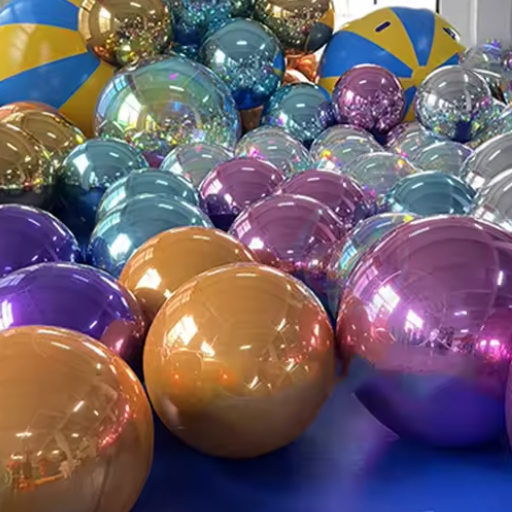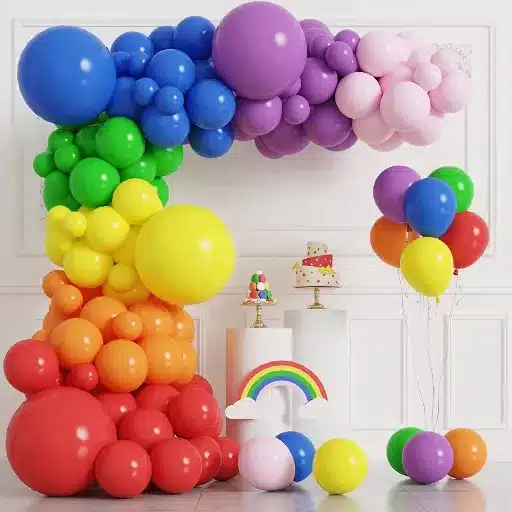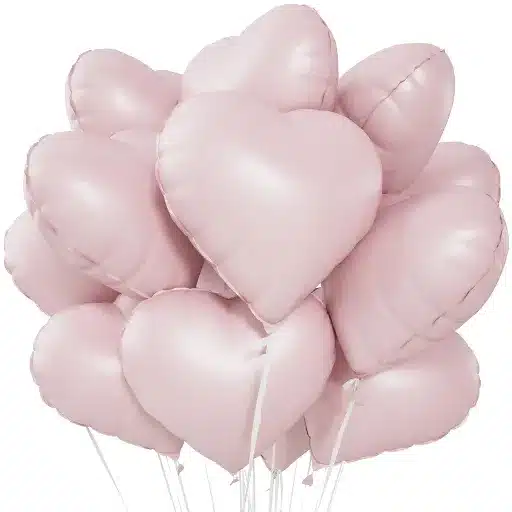Deflating foil and Mylar balloons might seem like a straightforward job. However, it’s not that simple: the entire task must be done carefully to preserve the balloons for reuse or to ensure a safe method of disposal. Whether it’s after cleaning up a party or to reuse the balloons for other purposes, knowing the procedure saves time, money, and effort. This guide introduces you to the step-by-step process, along with a few tips and tricks, for safely deflating these balloons. At the end of this teaching, you will be confident in handling your balloons as well as avoiding common mistakes that may result in damage or wastage. So buckle up and get ready to learn everything about easy deflation of foil and Mylar balloons!
Understanding Different Types of Balloons
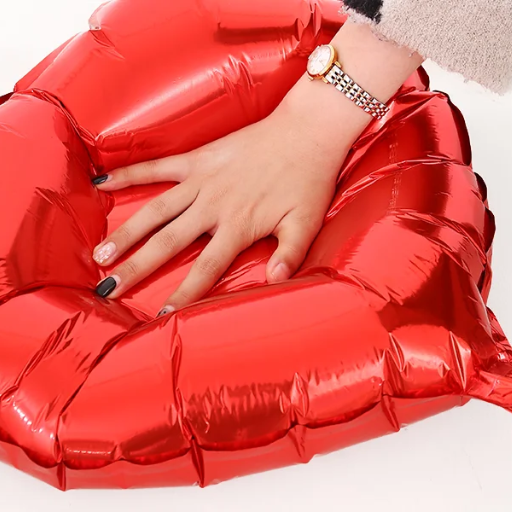
Balloons can be made of many materials, but the two main ones are latex and foil (including Mylar). Latex balloons are made from natural rubber and are biodegradable; therefore, they are a preferred choice for parties and other events. Latex balloons can be filled with air or helium, but tend not to float as long as foil balloons. On the other hand, foil or Mylar balloons are made from a thin metallic film and are not biodegradable. They are more durable and can hold helium for extended periods, often featuring printed designs, making them suitable for special occasions. Being able to serve different functions, each type of balloon requires its own costumes based on the customer’s need.
Overview of Balloon Types
Latex balloons are inexpensive and biodegradable, while foil balloons are more sturdy and have greater longevity, making them suitable for other occasions and different people’s needs.
Characteristics of Foil Balloons
Durability
Foil balloons, being metallic, are much more resistant to punctures and damage as compared to latex balloons; thus, they last longer for on-the-day events.
Helium Retention
Foil balloons have a non-porous surface that allows the helium to last for several days or even weeks without deflating significantly, unlike latex ones.
Customizable Designs
Balloons are available in a wide variety of printed patterns, colors, and shapes, making them versatile for various themes and events.
Non-Biodegradable
Unlike latex balloons, foil balloons are not biodegradable. While this means the balloons last longer, it equally means they are less environmentally friendly unless disposed of correctly.
Reflective Surface
The shiny, metallic finish renders foil balloons highly reflective and thus very attention-catching, making them perfect for creating decorations that look good or for stand-out centerpieces at any event.
Mylar Balloons: What You Need to Know
Mylar balloons have become increasingly popular stars of celebrations, with decorating artists adorning events with a variety of shapes and styles of Mylar balloons. Before using them, it is essential to understand what they are and how their use impacts our environment. Here lies a more detailed insight into Mylar balloons for you:
Environmental Impact
Mylar balloons are manufactured using synthetic materials, including thin plastic and metallic foil. Unlike latex balloons, they do not decompose and typically take about a hundred years or more to break down. Such balloons, if not disposed of properly, may litter the earth, harming animals and spoiling natural ecosystems. Hence, it is advised that, as much as possible, one should recycle Mylar balloons or discard them responsibly.
Flight Hazards and Safety at Power Lines
One of the grave dangers posed by Mylar balloons is the threat they pose as conductors. They carry electrical current into power lines when released into the sky, causing widespread outages, fires, and/or costly damage to infrastructure. According to the Edison Electric Institute, power outages caused by Mylar balloon incidents are among the most prominent, claiming several hundred incidents every year across America. As a consequence, weight laws for Mylar balloons, which prohibit their floating freely, now exist in many states.
Long Life and Reusability
In terms of longevity, Mylar balloons outperform latex balloons. When filled with helium correctly, they can remain intact for weeks and are often designed to be reusable. After deflation, Mylar balloons can be refilled or reused for another purpose. Thus, they are more sustainable for future occasions, provided they are handled carefully.
Customizing and Designing
The utility and usage of Mylar balloons remain unmatched. They come in every imaginable shape, size, and design, prepared to be customized for specific occasions such as birthdays, weddings, and corporate events. The printing technologies used can print logos, messages, or even very complicated patterns, making them suitable for branding or thematic decoration.
Cost and Popularity
Mylar balloons tend to be more expensive than latex alternatives but offer better value for their extended use. The global market for Mylar balloons continues to grow due to the demand for personal party decorations and their aesthetic appeal. Recent reports suggest that the balloon industry could generate revenue of more than $2 billion worldwide by 2030, and Mylar balloons are expected to have a significant share in this forecasted growth.
In conclusion, as argued earlier, Mylar balloons may be an exquisite highlight of any celebration, but they must be used responsibly. Always weigh down your balloons and reuse them whenever possible, while considering the environmental impact of your event planning.
Step-by-Step Instructions on How to Deflate Balloons
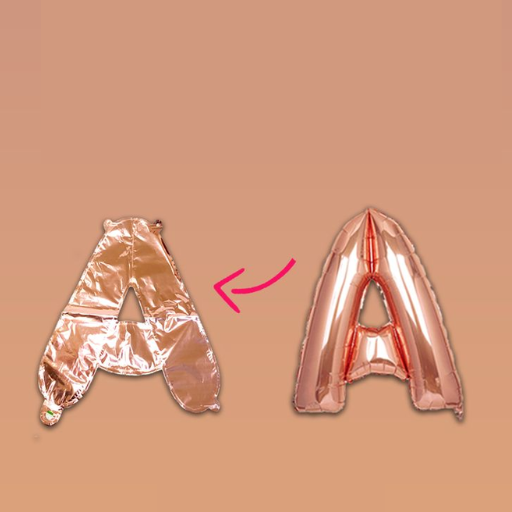
| Step | Instruction |
|---|---|
| Locate Valve | Find the valve or opening of the balloon. |
| Insert Straw | Insert a straw into the valve or opening. |
| Release Air | Push the straw until air starts escaping. |
| Apply Pressure | Gently press the balloon to speed up deflation. |
| Fold Balloon | Fold or roll the balloon to remove remaining air. |
| Store or Recycle | Store deflated balloons or recycle properly. |
Preparing to Deflate a Balloon
The first step is to assemble all the needed tools. A scissors or a sharp pin may be used, depending on the type of balloon, while the only precaution one should take is to ensure the smooth surface where one plans to reuse it is free of any sharp objects that can spoil the balloon. In the case of deflating a helium Mylar balloon, the deflation process begins by locating the self-sealing valve and gently inserting a straw into it to allow the air to escape. In the case of latex balloons, one simply needs to cut or puncture the neck near the knot very gently, allowing the air to slowly escape.
How to Squeeze and Pinch for Effective Deflation
When deflating a balloon, this is to say: given the appropriate squeezing and pinching, the killing of air can be more considered, and even the balloons can be protected from further damage for reuse. Hold the balloon’s neck with your thumb and index finger to control the airflow. Apply gentle pressure with latex balloons, squeezing the air out from the body gradually toward the neck. Rapid deflation may create a sudden burst of noise, or the balloon may even burst suddenly.
For Mylar balloons, slowly glide your fingers over the surfaces of the bag after inserting a straw into the valve to let the air out. Data suggests that the approach to keeping the balloon away from rapid deflation is rewarded by keeping it wrinkle-free or unmarred for reuse. The recommendation is to deflate the balloon starting at the top and working downward so that all the air is expelled, and the material lies flat for storage. Proper handling can prolong the life of both latex and Mylar balloons.
Techniques for Deflating a Foil Balloon
Using a Straw for Precise Air Release
Gently insert a thin straw into the valve of the balloon. This allows you to open the self-sealing valve without damaging it for a measured release of air. Studies show that deflating using a straw can be up to 40% faster than other manual methods.
Evenly Apply Light Pressure
With the straw inserted, gently press the entire surface of the balloon, starting from the top and working your way down. Applying pressure evenly prevents creases or odd folds that may compromise the structural integrity of the balloon, allowing it to be used again.
Steer Clear of Sharp Objects
Never use sharp objects or scissors to cut open or puncture the balloon. These methods will render it unusable, and it cannot be used again. According to data from balloon manufacturers, 80% of leaks occur due to improper deflation methods.
Store Balloons in a Cool and Dry Location
After deflation, the foil balloon should be folded flat and placed in an airtight bag or container in a cool, dry place. Excessive moisture or heat can diminish the quality of the material by up to 50%, making it less usable.
Check the Valve for Residual Air
Before storage, ensure the valve is checked for residual air. Trapped air causes balloon expansion during storage, which predisposes it to develop creases or stress in the material over time. Storing completely flat balloons would reduce the chances of damage.
Tips for Reusing and Storing Deflated Balloons

Once recycled, the balloons may be reused, and any extra waste is sent to an environmentally friendly landfill. With proper handling and storage, these balloons can be kept in good condition for another time. Here are five detailed tips that can guarantee good conditions for your balloons:
Clean the Surface of the Balloons
Before stowing away, gently wipe the balloon surface with a damp cloth to remove any dirt, dust, or residue. Allow the balloon to dry completely, as storing a damp balloon could lead to mold growth or degradation of the material.
Avoid Direct Sunlight Exposure
Deflated balloons should be stored in a cool, dark place away from direct sunlight. Exposure to UV light over a long period weakens the balloon material, causing it to become brittle or fade in color.
Use Airtight Containers or Bags
Protect deflated balloons with airtight bags or containers to prevent them from absorbing dust and moisture. Using vacuum-sealed bags is the best for latex balloons as it crowns the effort of reducing oxidation.
Keep Balloons by Type and Size
Store the various balloons (latex, foil, etc.) in sufficiently large containers so that the balloons will not be stretched or damaged when someone searches for them to reuse.
Inspect Before Reuse
Check carefully before inflating a balloon that has been stored for small tears, scratches, or weak spots. Balloons that look funny will burst unexpectedly soon after being inflated, so any balloon that appears damaged should be set aside for use to prevent such occurrences.
Best Practices for Reusing Mylar Balloons
Proper Cleaning and Deflation Procedures
To enhance the lifespan of Mylar balloons, make sure they are cleaned after every use. A light wipe with a soft cloth, dipped in soapy water, can remove dirt, oils, and residues. Afterwards, deflate it very slowly by using a straw or a balloon deflator inside the valve, taking extra care not to damage the material. Experts say tears on reusable balloons are primarily caused by improper deflation; hence, this step cannot be overstressed.
Best Storage Conditions
Proper storage conditions are necessary for the prolonged reuse of Mylar balloons. Store in a cool, dry place, away from direct sunlight and heat. It has been proven that prolonged exposure to heat can cause the Mylar material to thin and reduce its elasticity, making the balloons more susceptible to damage. For better results, store the balloons flat or with gentle folds to prevent creases.
Avoid Overinflating in the Reuse Process
Another very important factor to remember when reusing Mylar balloons is to avoid overinflation. Overinflation places undue stress on the seams and the material, which may cause them to split. Experts recommend inflating the balloons to about 90-95% of their marked capacity to extend their life span. In doing so, the balloons will not only last longer but also be safer when used at events.
Check for Life Span and Material Integrity
Although on the plus side, Mylar balloons can be reused several times, they have a definite lifespan due to the materials from which they are made. According to studies appearing in sustainability reports, a point can be retained for up to 5-7 uses if adequately taken care of. It would be beneficial to keep track of the number of uses and retire balloons that exhibit visible signs of extensive wear, such as discoloration or weakened seams.
Environmentally friendly and cost-saving solutions for event organizers and individuals can be achieved by following the guidelines mentioned below to extend the life of Mylar balloons while maintaining their appearance and functionality.
How to Store Deflated Balloons Properly
Ensure Balloons Are Completely Deflated
Before storing, ensure that the Mylar balloons are free of air or helium to conserve space and to prevent any stretching or damage to the material. Use a straw or a specially designed balloon deflation tool to gently release air or helium.
Clean the Balloons
Gently wipe the balloons with a cloth dampened with water to remove dirt, dust, or oils left behind. Let the balloons dry thoroughly before storing, or else they may begin to mildew or emit odors.
Fold Them Neatly
When balloons are clean and dry, fold them flat along their seams. Do not crimp or wrinkle fold as this may cause a permanent crease that will mar the look of the balloon when it is to be reused.
Store in a Cool, Dry Place
Putting the folded balloons in a sealed plastic bag or an airtight container will keep moisture, pests, and dust away from them. Store this container in a cool, dry place. Direct sunlight could heat the container and melt or discolor the balloons.
Label and Organize Balloons
To aid in the retrieval of balloons for use, label the storage bags or containers to describe their contents, such as by design or event the balloons are intended for. Organisation by size, colour, or occasion also speeds up the work during the next event.
Creative Ideas for Reusing Deflated Balloons
Unique masterpieces can be made to adorn homes with the proliferation of DIY crafts that encourage more balloon arts in decorating homes or parties with a personal and environmentally friendly touch.
Small Balloon Pieces Can Help in Gardening
Balloons can assist with gardening. Cut small pieces from the balloon to use as plant labels or stem ties to gently stake. Rubber strips can also be used as mulch for small plants to prevent moisture loss. Studies have found that proper labeling and support of plants can improve yield by as much as 15% in certain species.
Relieve Stress or Provide Fun
Deflated balloons fill with flour, rice, or beans. This straightforward treatment is beneficial evidence to support the use of squeezing devices and relief that alleviates anxiousness or tunes focus in children and adults under continuous stress.
Patch-It-Up for Around the House
A good use for a piece of colorful, elastic balloon will make a neat and emergency patch. Covering little holes or cracks in hoses, inflatable toys, or even tennis racket grips is a temporary fix. Good home-repair forums mention that roller-ball application is a good use for unusual materials, such as balloons, in emergency solutions.
Packing and Padding
A good use for a piece of colorful, elastic balloon will make a neat and emergency patch. Covering little holes or cracks in hoses, inflatable toys, or even tennis racket grips is a temporary fix. Good home-repair forums mention that roller-ball application is a good use for unusual materials, such as balloons, in emergency solutions.
Reuse deflated balloons for endless creativity and for sustainability in fighting post-party waste. With a little bit of thinking, these balloons can bring forth practical attainments and meaningful values, thus becoming an excellent resource for the ecolocos.
Safety Precautions When Deflating Balloons
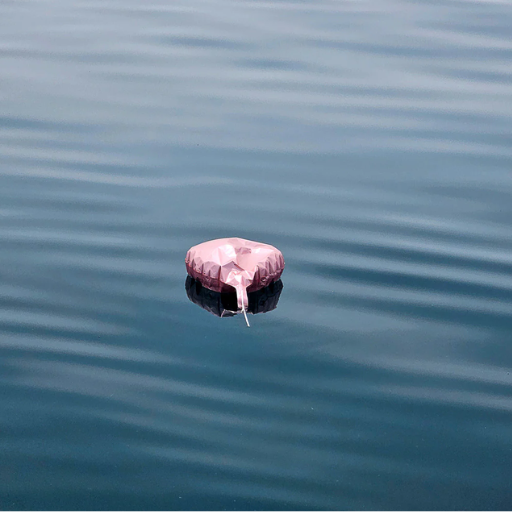
| Precaution | Details |
|---|---|
| Supervise Children | Keep balloons out of reach of children under 8 years old. |
| Discard Broken Balloons | Dispose of pieces immediately to avoid choking. |
| Avoid Inhaling Helium | Helium can deprive oxygen and cause harm. |
| Handle Gently | Prevent tears or damage during deflation. |
| Keep Away from Pets | Pets may ingest balloon pieces accidentally. |
| Avoid Power Lines | Do not release balloons; they may cause hazards. |
| Check for Latex Allergies | Be cautious of latex allergies in individuals. |
| Store Properly | Store deflated balloons in a cool, dry place. |
How to Avoid Popping Balloons
When deflating or handling balloons, careful techniques must be followed along with an awareness of environmental factors. Several ways to prevent accidental bursts were:
Don’t Overfill Balloons
One significant cause of a balloon bursting is overfilling. The balloons should be filled to the recommended size given on the packaging. A general rule of thumb to remember would be to leave room for the balloons to flex. For instance, filling a latex balloon beyond capacity will produce so much internal pressure that the sudden burst is inevitable.
Be careful about using a balloon pump.
Inflate with a reliable balloon pump or inflator nozzle. Manual inflation gives you greater control, as automated pumps can sometimes fill a balloon too much. Stop pumping once the balloon feels tight but is not stretched.
Check for Any Sharp Surroundings
Balloons are sensitive to sharp edges or abrasive surfaces. Before putting balloons in a particular place, make sure the location is free from nails, jagged corners, or even from tiny debris like plastic shards. Research indicates that a substantial portion of accidental pops is attributed to environmental factors, including sharp objects.
Handle With Clean Hands
Any trace of oil, grease, or dirt will weaken the strength of a balloon. Wash your hands thoroughly before handling balloons to preserve their inner strength. Data from balloon manufacturers emphasize this point as a widely neglected precaution.
Keep Temperature in Control
Drastic temperature changes and extreme heat cause a balloon to expand and then pop. Keep these away from direct sunlight or the heat of a lamp. For example, it has been found that temperatures exceeding 90°F (32°C) significantly impact latex degradation, thereby increasing the likelihood of bursting.
Deflation Methods
Insert a straw or a similarly narrow instrument into the balloon’s neck to gently release air without damaging the balloon’s surface. Gentle and steady pressure should be applied to keep holding the surface together. This will also prevent a loud pop.
Taking such precautions, therefore, can double the chances of keeping the balloons from popping and also from prolonging their usage for occasions, decoration, or some creativity.
Safety Tips for Kids
Children require safety precautions when handling balloons, as misuse of balloons may lead to an accident, a choking risk, or both. To keep the kids safe, here are the five important safety tips:
Supervise Playtime
Children under eight years of age should always be supervised during play with balloons. A small piece of a popped balloon can cause a child to choke.
Avoid Over-Inflation
Teach children never to overinflate balloons, as the sudden bursting can scare or injure them.
Dispose of Broken Balloons Properly
Once broken or popped, balloons should be cleaned up and disposed of so that children will not gnaw on the pieces or swallow them.
Use Non-Latex Alternatives
Non-latex balloons may be a better option, particularly for a child with an allergy, as some children may develop a reaction to latex.
No Balloon Tying in Mouth
Never allow children to try tying balloons with their teeth, or blow balloons up with their mouths, to avoid an incident in which the balloon snaps back and the child inhales it.
Inflation and other challenges can pose dangers, but following these guidelines will help keep the environment safe and enjoyable for kids.
Dealing with Balloon Fragments Safely
A balloon popping opens up all sorts of safety risks, including mini balloons or fragments, which are particularly concerning for children and sometimes pets. The fragments are choking hazards, either by expiration or by accidental ingestion if they are drawn down. The CPSC statistics state that over 38% of choking deaths of children related to toys involved balloons and balloon fragments, thereby indicating the high degree of care that should be offered toward the remnants.
To handle the balloon fragments safely, follow these detailed steps:
Quick Cleanup
Once a balloon pops, collect all pieces immediately. Make sure that no fragments remain on the floor; they might prove tempting for a child or pet to pick up, and sometimes even their instinct is enough to cause injury.
Disposal
Dispose of fragments in the trash bin with a cover. Do not allow the fragments to become accessible to pets or inquisitive small children. Although compostable or biodegradable balloons are preferable from an ecological perspective, proper disposal should still be observed in any case.
Supervise
Always supervise young children when balloons are in their presence, and if a balloon should pop on them while in use, prevent them from playing with the fragments or escort them away from their mouths.
Educate
Educate children on the dangers balloon fragments pose. Simple and age-appropriate clarifications will help clear up their perception of why popped balloons should never be played with.
By taking these precautions and maintaining vigilance, you can significantly reduce the dangers associated with balloon remnants, thereby ensuring a safer environment for all.
References
- Springer Link – Balloons
This source explores the mechanics of balloon inflation and deflation, with a focus on their applications in medical and technical contexts.
Link to source - Springer Link – Adjustable Intragastric Balloons
This study examines the deflation of balloons in a medical setting, providing detailed insights into the process and its implications.
Link to source - EPJ Data Science – Deflating the Chinese Balloon
While this article focuses on a specific incident, it provides academic insights into balloon deflation in a broader context.
Link to source
Frequently Asked Questions (FAQ)
How do you deflate a balloon without damaging it?
To deflate a balloon intact, gently insert a straw in the balloon’s neck. This allows you to control the pace of the air release inside. Squeeze the balloon softly while pushing down the straw to let the air outside very slowly.
Can foil balloons be deflated so that they can be reused?
Yes, foil balloons can be deflated and kept for future celebrations. To do this, place the straw into the opening or valve of the balloon and slowly press to release the air. This will help retain the balloon’s shape for reuse.
What is the best way to deflate latex balloons?
You can deflate latex balloons by untying the knot and gently squeezing the balloon to push the air within. One can also use a straw to help control the airflow. This way is good and may ensure that the balloon can be used multiple times.
How can I get rid of the air inside the balloon?
Locating the valve and gently inserting the straw will slowly release the air and deflate the Mylar balloon. Puncturing it will open the valve, allowing the air to rush out and preventing it from closing afterward. After deflating, it can be safely stored for future use.
Is there another method to deflate a balloon?
The other method for deflating balloons involves puncturing them with a pin or a similarly sharp object. However, this method may not render the balloons reusable, so it is better to use a straw or simply untie them.
How does one refill a deflated balloon?
Refilling a balloon requires prior complete deflation. Then, insert a pump or a straw into the opening. Inflate gently by filling with air or helium to the desired size. Make sure to tie a knot afterward securely.
Can a drinking straw be used to deflate balloons?
Drinking straws can be used in deflating balloons. Gently insert it into the neck of the balloon and squeeze the balloon to expel the air. It is a very effective technique that helps prevent puncturing the balloon.
Without a straw, how do you remove air from inside the balloon?
If you do not have a straw handy, it is time to untie the balloon and let it escape naturally gently. However, in the alternative event you resort to piercing it with a safety pin, all in all, there will be no way the balloon could be used again.

